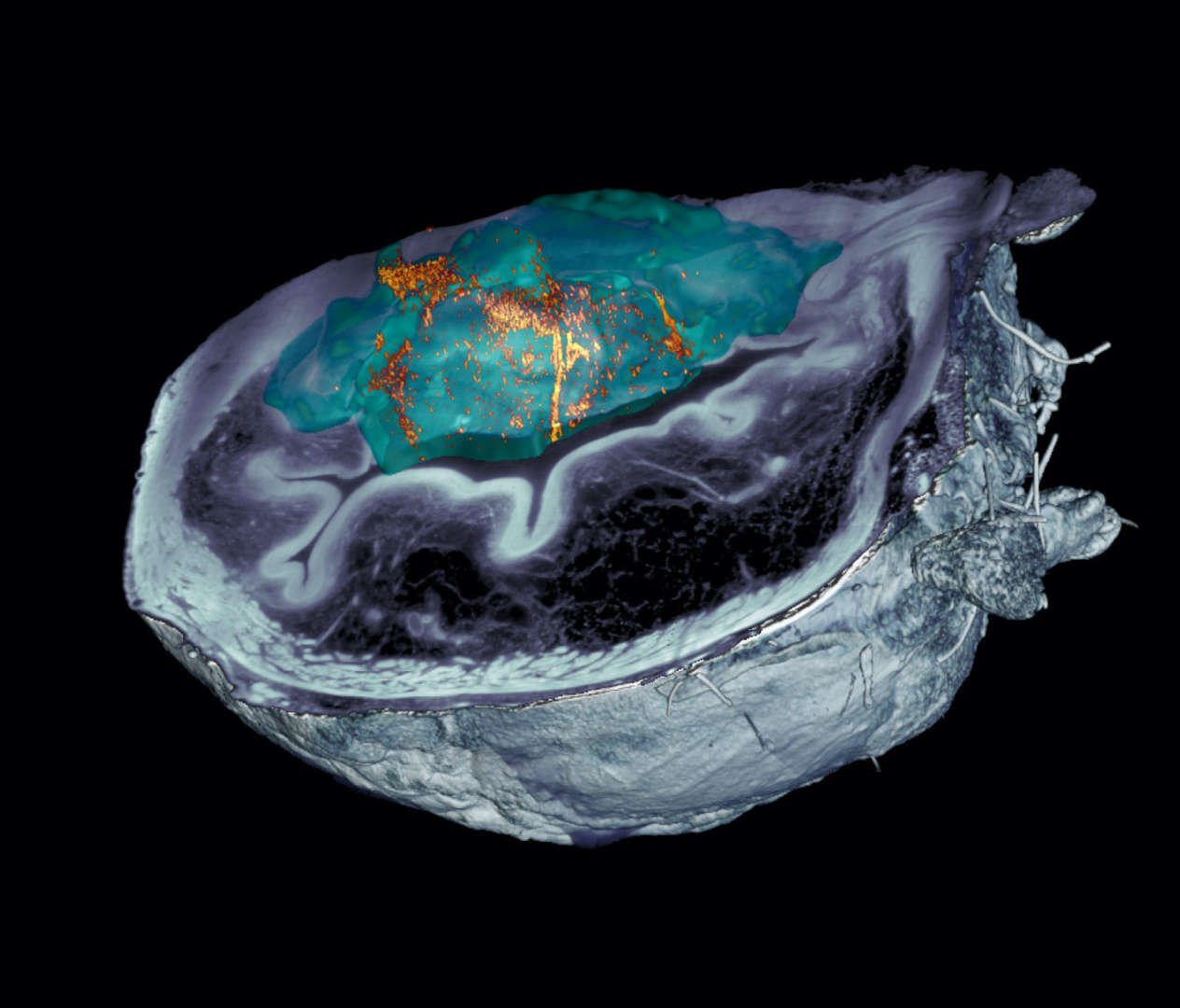Urine-powered nanorobots shrink bladder tumors by 90%, study finds
In the ongoing battle against bladder cancer, a groundbreaking discovery has emerged that could revolutionize treatment effectiveness.

[Jan. 22, 2024: JD Shavit, The Brighter Side of News]
Accumulation of nanorobots in the tumor visualized by microscopy. (CREDIT: IRB Barcelona)
In the ongoing battle against bladder cancer, a groundbreaking discovery has emerged that could revolutionize treatment effectiveness. Tiny urea-powered nanorobots, developed through a collaborative effort led by the Institute for Bioengineering of Catalonia (IBEC) and CIC biomaGUNE, have exhibited remarkable potential.
After administering just a single dose, these minuscule marvels managed to reduce bladder tumors in mice by a staggering 90%. This is a significant milestone, given that bladder cancer stands as a formidable global health concern and ranks as the fourth most common tumor among men.
The team behind this transformative technology also includes the Institute for Research in Biomedicine (IRB Barcelona) and the Autonomous University of Barcelona (UAB).
Samuel Sánchez, an ICREA research professor at IBEC and the study's leader, shared the impressive findings, stating, "With a single dose, we observed a 90% decrease in tumor volume. This is significantly more efficient given that patients with this type of tumor typically have 6 to 14 hospital appointments with current treatments."
Related Stories
Sánchez also emphasized the potential benefits of such a treatment approach, including enhanced efficiency, reduced hospitalization durations, and lowered treatment costs.
The core of this groundbreaking innovation lies in the design and capabilities of these tiny nanorobots. These medical nanomachines are constructed from porous silica spheres, and their surfaces are equipped with specialized components tailored for precise functionality.
One of the key components is the enzyme urease, which interacts with urea found in urine, facilitating the movement of the nanoparticles within the body. Additionally, the nanorobots incorporate radioactive iodine, a radioisotope used in targeted tumor treatment.
Meritxell Serra and Samuel Sánchez from IBEC. (CREDIT: Institute for Bioengineering of Catalonia (IBEC))
Despite the numerous challenges associated with using nanorobots in medical treatments, this breakthrough research has successfully addressed one of the most significant hurdles—bioimaging.
The researchers demonstrated the nanoparticle movement inside the bladder and their precise accumulation in the tumor region. This achievement was made possible through a range of techniques, including medical positron emission tomography (PET) imaging of mice and microscopic imaging of tissues after research.
Comparing nanobot retention in bladder tissues with tumors. Each tissue undergoes identical processing and visualization (n = 1). Samples are imaged in autofluorescence and with V-LS (vertically-polarized light-sheet) and V-CAM (vertically-polarized detection) sLS. (CREDIT: Nature Nanotechnology)
Julien Colombelli, the leader of the Advanced Digital Microscopy platform at IRB Barcelona, shed light on the innovative optical system developed for this project. He explained, "The innovative optical system that we have developed enabled us to eliminate the light reflected by the tumor itself, allowing us to identify and locate nanoparticles throughout the organ without prior labeling, at an unprecedented resolution. We observed that the nanorobots not only reached the tumor but also entered it, thereby enhancing the action of the radiopharmaceutical."
As the research advances, the team is now shifting their focus towards investigating whether tumors may recur post-treatment. This critical step will determine the long-term effectiveness and sustainability of this groundbreaking approach.
Nanobots penetrate the bladder tumor. Tiled acquisition layout in XY and XZ showing the centred light-sheet waist for each XZ column; sLS principle where laser light is scattered by particles (for example, nanobots) and passes a filter for detection versus autofluorescence (AF) where the laser is blocked. (CREDIT: Nature Nanotechnology)
The implications of this novel method are profound, potentially ushering in a new era in cancer treatment. For patients grappling with bladder cancer, there is newfound hope for increased treatment efficiency, reduced hospitalization, and improved overall outcomes. The results of this groundbreaking study have been reported in the prestigious journal Nature Nanotechnology.
In the ongoing pursuit of medical advancements, the development of these urea-powered nanorobots represents a beacon of promise, illuminating a path toward more effective cancer treatments and improved quality of life for those affected by this devastating disease.
Note: Materials provided above by The Brighter Side of News. Content may be edited for style and length.
Like these kind of feel good stories? Get the Brighter Side of News' newsletter.
Joshua Shavit
Science & Technology Writer | AI and Robotics Reporter
Joshua Shavit is a Los Angeles-based science and technology writer with a passion for exploring the breakthroughs shaping the future. As a contributor to The Brighter Side of News, he focuses on positive and transformative advancements in AI, technology, physics, engineering, robotics and space science. Joshua is currently working towards a Bachelor of Science in Business Administration at the University of California, Berkeley. He combines his academic background with a talent for storytelling, making complex scientific discoveries engaging and accessible. His work highlights the innovators behind the ideas, bringing readers closer to the people driving progress.



